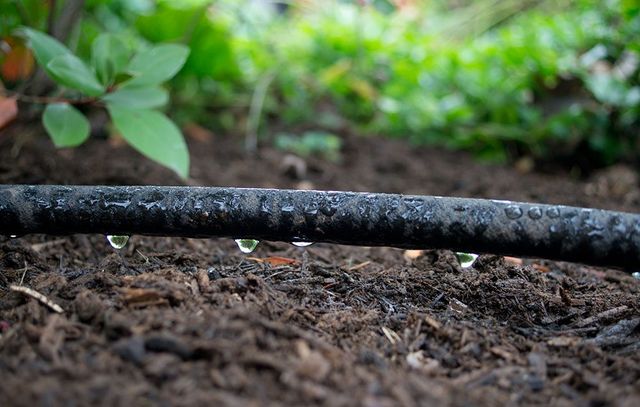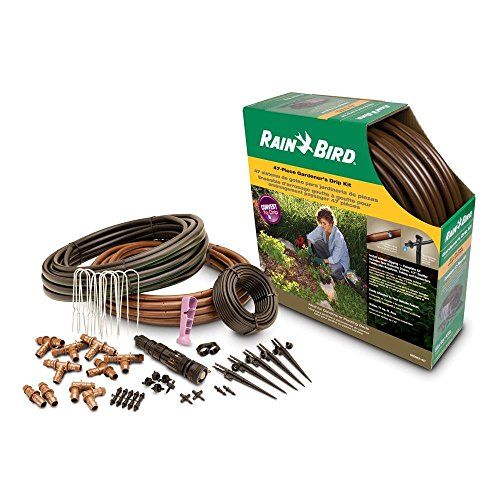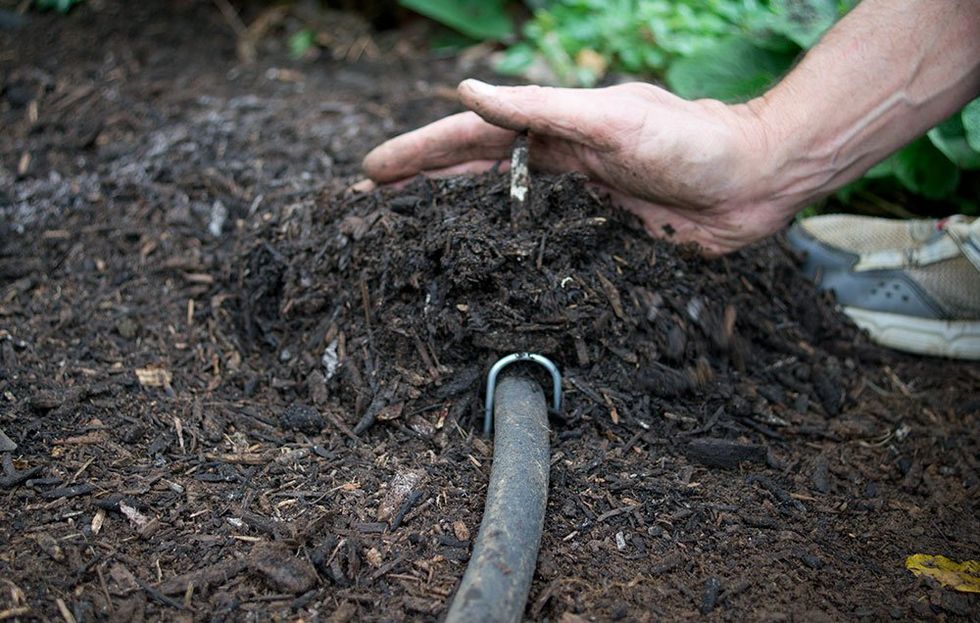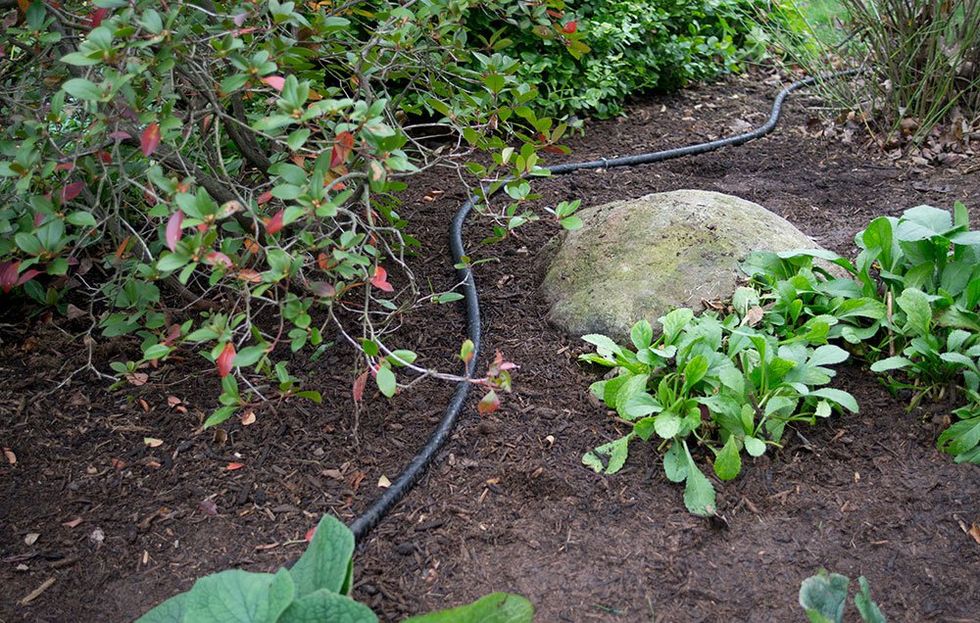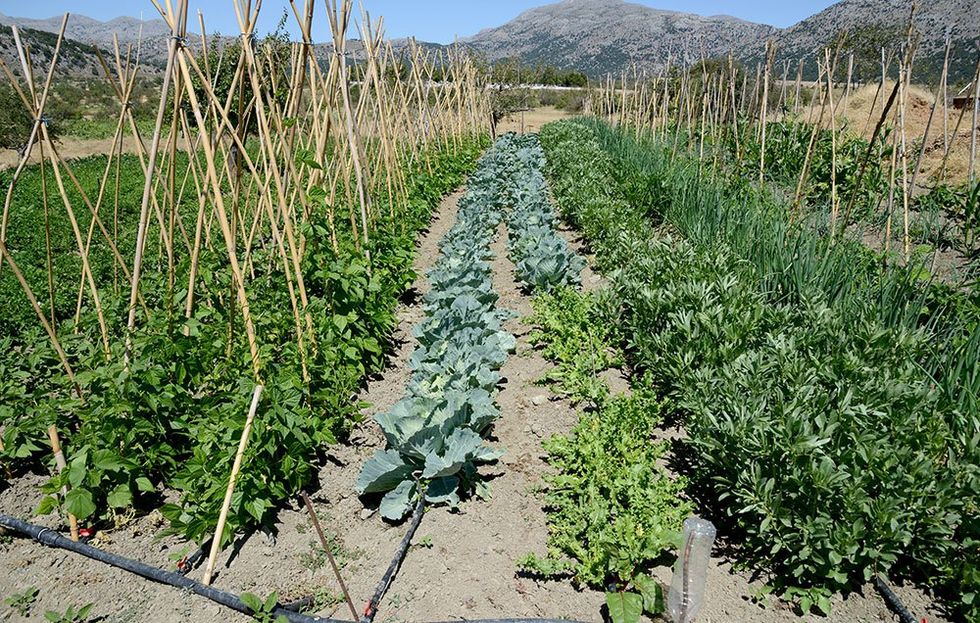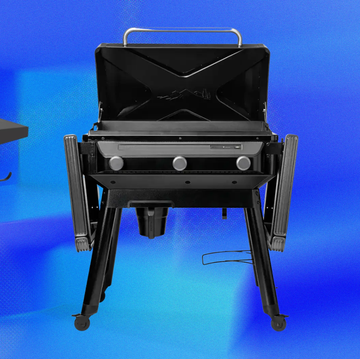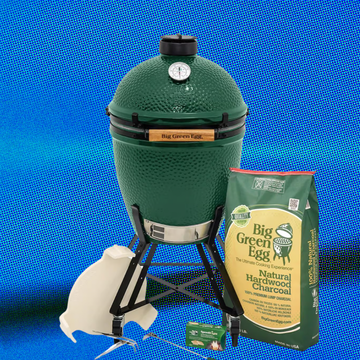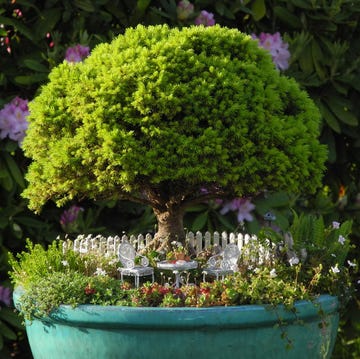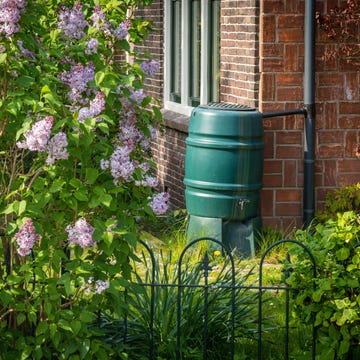If you’re not using soaker hoses in your garden, now’s the time to start. It's a highly efficient way to water, so while you may spend a little on a soaker hose and fittings at the onset, you will recoup those costs in time and money saved on watering your garden. Studies show that well-designed drip irrigation systems use at least 30% — and in some cases 50% — less water than other methods of watering such as sprinkling.
A drip irrigation system can be as simple as a soaker hose or two snaked through your garden, or as complex as a network of tubes and other hardware. Either way, the principal is the same: A soaker hose or a perforated tube delivers water directly to the root zone of a plant where it seeps slowly into the soil one drop at a time, dripping at just the rate that soil can absorb and hold moisture.
Soaker hoses’ slow, steady drip ensures that almost no water is lost to surface runoff or evaporation — all of the water goes to your plants. It also means very few nutrients leach down beyond the reach of plant roots. Furthermore, since soaker hoses deliver water directly to the plants you want to grow, less is wasted on weeds. The soil surface between the plants also remains drier, which discourages weed seeds from sprouting.
For busy gardeners, the main benefit of using a drip irrigation system is the savings of both time and effort. Drip irrigation systems eliminate the need to drag around hoses and sprinklers. You place your soaker hoses once, and leave them be. For drip irrigation systems that use a timer, gardeners need only spend a few seconds to turn the system on; the timer automatically turns it off.
Drip irrigation systems are good for plants, too. Plants watered with soaker hoses grow more quickly and are more productive, because they have all the water they need and their growth isn’t slowed by water stress. (This is especially true when drip irrigation is used in conjunction with mulch.) Also, plants watered by drip irrigation don’t end up with wet foliage from sprinkler spray, which can help prevent some foliage diseases.
Where to Install Soaker Hoses
The easiest way to experiment with drip irrigation is to buy a couple of soaker hoses, which ooze water over their entire length. You can snake soaker hoses through garden beds of rose and perennials, among shrubs, or in the vegetable garden, where the hoses can run parallel to rows of crops.
Pin them in place with wire garden pins and cover with mulch, not soil. This reduces moisture loss from evaporation — just remember to check where the hose lies before you dig. When it’s time to water, connect them to the nearest faucet with a garden hose. Take out the hoses at the end of the growing season.
Tip: To get the kinks out of a soaker hose that has been stored tightly coiled, unroll the hose and let the sun warm it for an hour or more.
How to Reduce Water Pressure
The plastic pressure reducer or pressure regulator inside the hose coupling protects the hose from splitting under high water pressure. If your soaker hose doesn’t have a pressure regulator, you can purchase one separately, or simply keep the faucet turned low. Water should slowly seep, not squirt, from the pores.
How to Space Soaker Hoses
As you wind a soaker hose through a flowerbed, make an extra loop around plants with the greatest moisture needs, such as hydrangeas or cannas, but keep the hose a few inches from plant stems. Otherwise, space the lengths of hose about 24 inches apart over clay or loamy soils, or about 12 inches apart if the soil is sandy.
When several soaker hoses are connected end to end, most of the water will seep from the hose closest to the faucet; less water will reach the far end. Avoid uneven distribution of water by setting up separate watering zones with no more than 100 feet of soaker hose each. Use quick-connect couplings or Y valves to switch the water from zone to zone.
Tip: Leave the hose running until water has penetrated 6 to 12 inches into the ground (less for shallow-rooted annuals, more for shrubs and perennials). Once you know how long it takes, automate the process by adding a timer at the faucet.
When to Use Other Irrigation Systems
Soaker hoses are great for row crops such as carrots and beans, but for watering trees and shrubs or an expansive container garden, you’ll probably want to set up a more sophisticated drip irrigation system. Topography is also a consideration: If your garden is hilly, you’ll probably need to use emitters that compensate for pressure changes in the line.
Keep in mind that plants can become "addicted" to drip irrigation, because roots will concentrate in the area where the water is available. It’s important to spread water uniformly throughout the irrigated area for uniform root growth. For example, if you're irrigating trees and shrubs, place emitters on two or more sides of each plant. For the same reason, it’s best to provide long, slow waterings. If you turn it on for frequent, short sessions, water won’t spread far in the soil, and consequently the roots will form a tight, ball-like mass around the emitters.
The Best Drip Irrigation Kits for Beginners
A low-risk way to try drip irrigation is with a starter kit. Most companies that sell drip irrigation systems also offer kits for both small and large gardens with the essential components. Keep in mind that some kits don’t include pressure regulators, timers, backflow preventers, and line filters.
Gardener's Supply Snip-n-Drip Soaker Hose System SHOP NOW
This highly customizable kit includes a 25-foot PVC garden hose, a 50-foot recycled rubber soaker hose, faucet adapter, a quick-connect coupler, and plastic connectors, and an end cap. Just use scissors to cut the soaker hose to fit garden beds, and then cut the garden hose to fit between beds where you don't need water. Snap the fittings in place and you're ready to water. This kit can easily be added onto, so you can expand your system over time. Optional add-ons (sold separately) include angle connectors for connecting drip systems to raised beds, 3-way-connectors for creating watering zones.
Square Foot Garden Irrigation Kit SHOP NOW
A drip irrigation kit tailor-made for square-foot gardening in raised beds.
